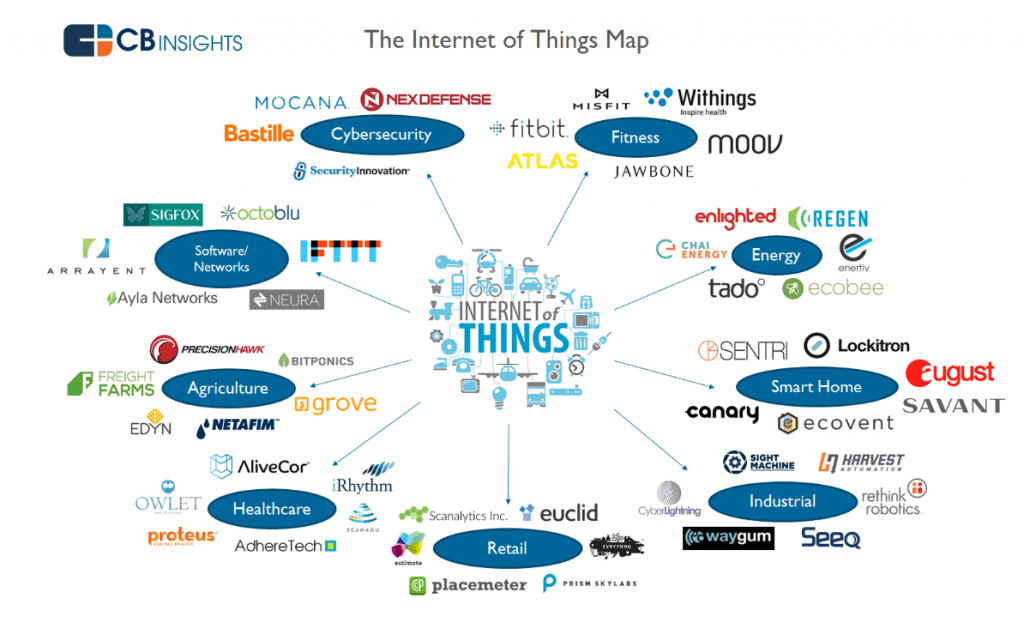How Can Communications Service Providers Make Money in IoT?
It’s Simple: Solve Problems
Over the last few decades, smart Communications Service Providers (CSPs) have learned the hard way that in order to maximize revenues and returns for their shareholders, it’s been necessary to move from traditional to smart networks and to move from “simple services” to “managed services.”
What the CSPs have learned in fighting off the Over the Top (OTT) challengers in messaging – for example WhatsApp, Facebook Messenger, Line, Skype, WeChat, QQ and more, can be applied to the massive opportunities the Internet of Things (IoT) ahead.
As a quick history lesson, take a look at the number of subscribers next generation messaging companies have stolen from CSPs cutting into revenue and brand loyalty:

Looking forward, here’s another Statista chart, but this time showing forecast growth of the IoT:

Some say there is no money in IoT for CSPs, but we beg to differ. There are multitude opportunities for the “carriers” to participate when they position themselves as “un-carriers” leveraging their own investments in next generation IP networks (with Network Function Virtualization and Software Defined Networking) and 4G/5G mobile networks by offering end-to-end IoT solutions.
Those who have chosen to ignore IoT theorize that given how small the transactions are, and how unimportant quality of service is (compared to human voice, text and video communications) they will get little to no ROI for their efforts and investments.
This is “old world” thinking. There are trillions to be made in IoT over the next 10-20 years and that revenue can help replace declining traditional revenue – and guess what? The CSPs are extremely well positioned to sell IoT solutions into their massive enterprise customer bases just as they have successfully sold business telephone, private MPLS networks, and vertical industry communications solutions. Why? Because the IoT “needs network.”
CSPs must keep in mind that the same challengers who have “eaten their lunch” could eat their dinner, too, if they don’t respond. Google bought Nest, Amazon is offering IoT cloud solutions, Microsoft’s Azure platform is increasingly adding IoT capabilities, Samsung just last month announced their IoT cloud services to go along with their mobile devices and Artik sensors, and every large Systems Integrator in the world is jumping in (SAP, IBM, TechMahindra, and more).
Here are five ways CSPs can bring value to their Enterprise customers and even consumers with the right IoT managed services offerings.
To play more than a minor, low margin role, CSPS can concentrate on their unique strengths.
- 1Focus on vertical markets they are already successful in and add “things” to “people” communications; for example, provide a fleet tracking solution that includes the device, application, connectivity and ongoing real time help desk, then develop increasing value-add services with metrics and analytics to deepen the relationship and grow revenues.
- 2Invest in a robust horizontal platform including applications, managed connectivity, administrative web-based portals for provisioning, security, quality assurance, tracking, and performance optimization.
- 3Acquire companies who have become expert in IoT and build from there (many Tier One CSPs are already doing this, including Telefonica, AT&T, Verizon, Vodafone and Telenor and more).
- 4Transform networks to include the specific connectivity solutions that work for the IoT, reducing drain on batteries and including low-power, wide-area networks (for example Sigfox) in order to bring the full range of connectivity solutions to all customers (SMBs to Enterprises).
- 5Build your partner ecosystem now and make sure to include middleware as the “glue” that connects sensors and systems (check out Kaa’s open source IoT platform as a start by getting developer pools into the sandbox!)
Here is a great graphic that comes from CB Insights, showing the vast industry vertical solutions CSPs can study and then innovate for and with:

CB Insights, 2016
The Good News!
Today, GPRS is the leading technology in cellular Internet of Things (IoT) because it is here, and it is affordable. Long Term Evolution (LTE) will, however, within the next 3-4 years, become the leading technology for cellular IoT devices thanks to LTE Cat-0 and the upcoming LTE-M standard.
3GPP’s recent move to define a new Narrowband radio technology for IoT (NB-IoT) along with Extended Coverage GSM (EC-GSM) will significantly change the IoT economics adding better coverage, stable connection and devices power efficiency.
It’s clear CSPs have already begun investing billions in network transformation – which is another very good reason to also invest in the solutions that will run over their networks, so that they are not left again with companies like WhatsApp in the human messaging world being acquired for $19B by Facebook in 2014 (WhatsApp had no revenue but 800M endpoints at the time!)
When the CSPs think about “things” in the same way they think about “people,” they can start to see the new streams of revenue flowing faster in their direction.
But this doesn’t happen without commitment, clarity and a focused plan.
Gartner predicts that low-power short-range networks will dominate wireless IoT connectivity through 2025, far outnumbering connections using wide-area IoT networks. Traditional cellular networks won’t cut it, economically or based on available features and security. But nobody understands the benefits of delivering and managing context, location, and quality in real time like CSPs.
Contextual, secure, real time IoT device management is a lot like the Element Management System (EMS) approach. While the boundaries of traditional device and data management will change dramatically, CSPs have a huge advantage over challengers when they “reroute” their experience and people to create solutions that unlock the true value of the IoT.
More IoT implementation guidelines for CSPs
Next week, CyberVision’s CTO Andrew Kokhanovskyi, will post on the technical aspects CSPs can master to serve their customers and prospects with full-blown IoT solutions.
The following week, CyberVision’s SVP Product & Sales at CyberVision, Milena Sidler, will talk about how CSPs can address the fast growing renewable energy market, as well as more traditional energy companies, with IoT solutions.
On June 23, we are presenting a Webinar, featuring our first guest speaker, Don DeLoach, CEO of Infobright, a company already serving CSPs, enterprises, systems integrators and more by helping them process massive amounts of data in the most efficient and innovative ways. Don has been contributing to the growth of the IoT for nearly a decade, making him a true pioneer in this space.
Max Bondarenko
Marketing Director at KaaIoT
Looking for a powerful IoT platform?
Related Stories
- Business
Business guide to IoT data analytics
As a key part of modern IoT solutions, IoT data analytics enable businesses and IoT enthusiasts to convert data collected from their...






